
Ease your discomfort with 10-minutes of yoga
We all do it – overindulge on vacation or gorge on foods that are bad for digestion. Usually, we just lie around like a slug, waiting for the painful bloat to go away or skip the next meal hoping to find relief. Yoga is far more productive in bringing relief than waiting in misery for it to pass. In fact, yoga is a relaxing way to make space in the body to get those fluids and digestion processes rolling again. “There’s not yet evidence-based research in yoga, but the deep breathing and the elongation of yoga inspires a unique spaciousness in the body,” says Edison de Mello MD, PhD, of the Akasha Center for Integrative Medicine. This easy yoga routine created by Juliana Spicoluk of Boho Beautiful delivers those twists and spaciousness to ease your discomfort.
Here are 15 Instagram-worthy spots to practice yoga in Canada.
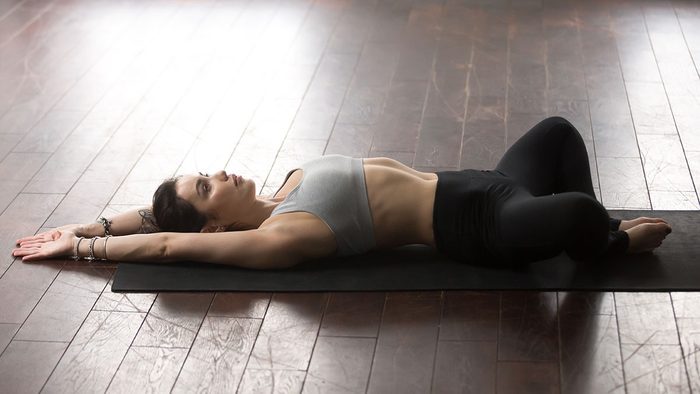
Reclined bound angle pose
This pose is a wonderful way to slowly introduce digestion movement and the perfect posture to start a gentle post-dinner practice. This posture allows your body to open, extend, and gently decompress, which creates space in your torso and pelvis. Lie on your back, arms extended slightly at your sides, palms facing upward, knees bent. Now place the soles of your feet together and allow your knees to fall away from each other, opening the hips.
Breathe gently and deeply.
Focus on sending oxygen into your digestive organs.
As you peacefully stay in this posture for two to four minutes, you will increase blood flow, stimulate your digestive organs, and welcome full relaxation to your body.
For the budget-conscious yogi, here are four tips for practicing yoga at home.
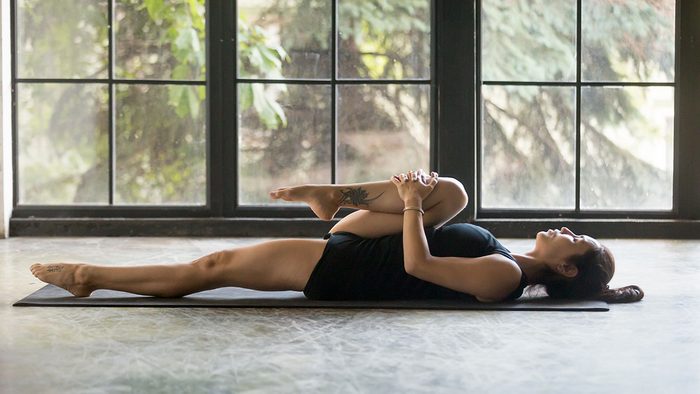
Single knee to chest pull
Otherwise known as the wind-relieving pose, this posture is an easy and super effective way to alleviate post-dinner bloating and fullness. Lie flat on your back and take your right knee with both hands as you draw it as close to your chest as possible. Keep your left leg grounded on the floor. The pressure of pulling your leg against your stomach will gently massage your digestive organs and encourage trapped wind to move through your digestive tract. With each exhale, think about pulling the knee closer to your belly, which will compress and massage your ascending and descending colon. Hold your right knee for two to three minutes then switch; you will encourage blood flow to your digestive organs.
Beat insomnia with our favourite yoga poses that will help you sleep better.
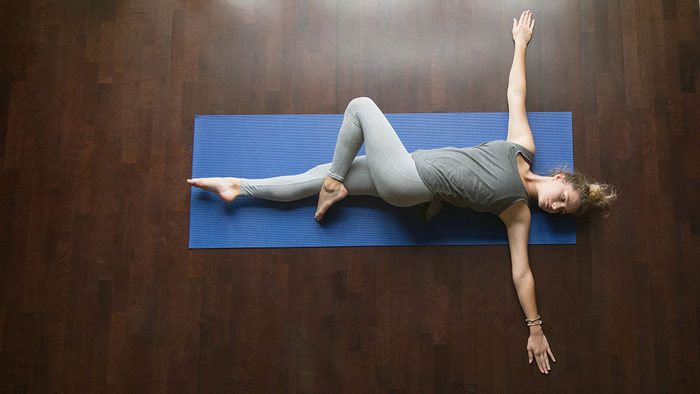
Spinal twist
This twisting move follows nicely from the single knee to chest pull. Push your bent left knee across your body with your right hand. Extend your left arm away from you. Hold this twist and breathe deeply and slowly, allowing a gentle stretch of the back and shoulders while the move massages your abdominal organs. A twist like this aids digestion and encourages fresh blood to flow to your digestive organs.
Make sure to twist very gently and slowly as this can be slightly uncomfortable after a big meal. Hold for two to three minutes and then repeat with your right leg.
Ever tried SUP yoga? Here’s everything you need to know about the sport.
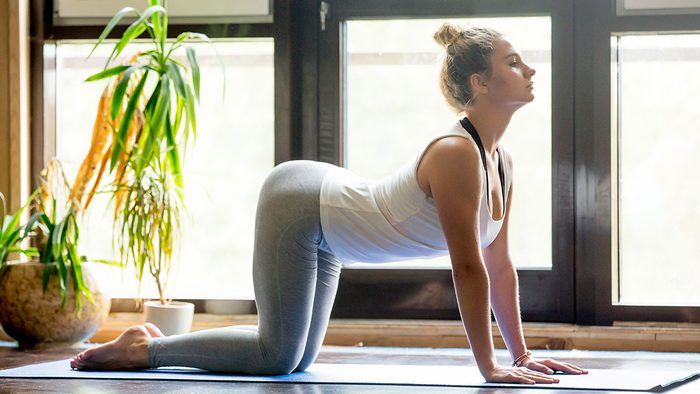
Cat-cow posture
This familiar pose is all about connecting with your breath. On all fours, hands below your shoulders and knees below your hips, inhale as you let your belly sag toward the floor and raise your head to look forward, allowing for a gentle spinal bend. As you exhale, tuck your chin to your chest and round your spine upward toward the ceiling. Do this gentle movement four to six times to stretch and contract the abdominal organs; this encourages movement in your digestive system and creates space in your stomach.
Enjoying these stretches? Check out all the great things yoga can do for your body and your health.
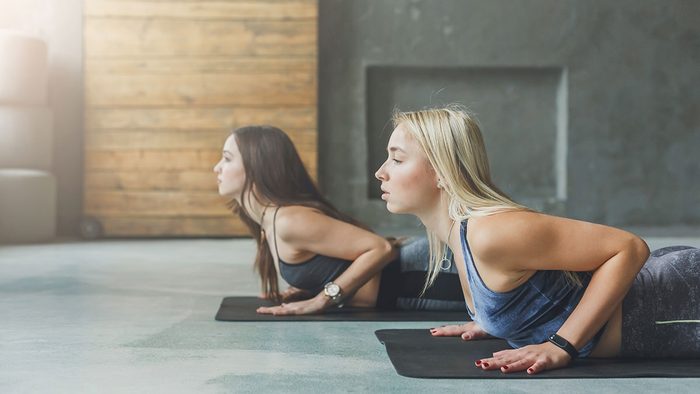
Baby cobra
An easier version of the full cobra, this is a great pose for stretching the chest and shoulders to encourage movement of the digestive organs; simultaneously, it compresses the low back area to invigorate the kidneys. Lying face down on your belly, push up from your forearms with your elbows under your shoulders. Gently raise your face skyward, elongating through the neck and spine. Breath as you hold the pose for four to six breaths.
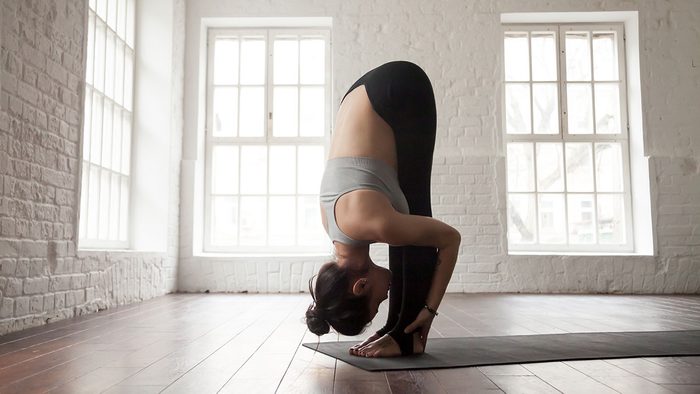
Standing forward fold
Standing on the mat with your feet a few inches apart, begin by folding forward from the hips – not the lower back. Feel free to bend your knees slightly if your hamstrings are tight. Keep your back straight as you release the body forward. Reach for the mat with your hands; depending on your flexibility, you can grab onto your ankles, or even wrap your arms around the back of your knees. Hold the posture for four to six breaths to increase the blood circulation to your spleen, pancreas, liver, intestines, and kidneys.
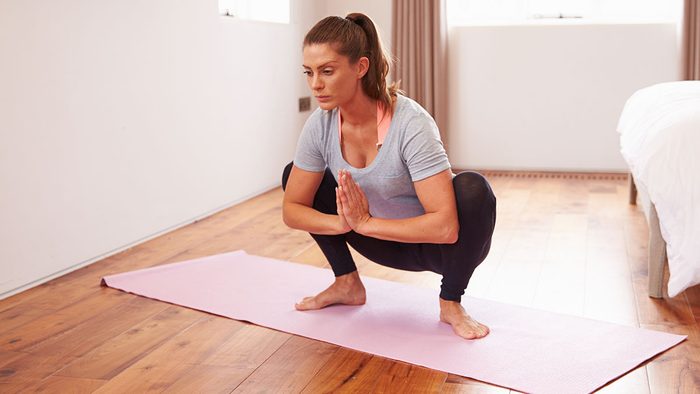
Garland squat
Stand with your feet wide apart, palms pressed together in front of your heart. Open your legs so that your toes are pointing away from you. Release the hips as you sink down. Once you dip as low as you can, press your elbows against the knees, keeping the palms of your hands together in prayer position. Hold the position for four to six deep breaths.
Performing a deep squat like this will create space in the lower back area and relax the pelvic floor.
Looking to improve your yoga practice? These yogis share their best tips.
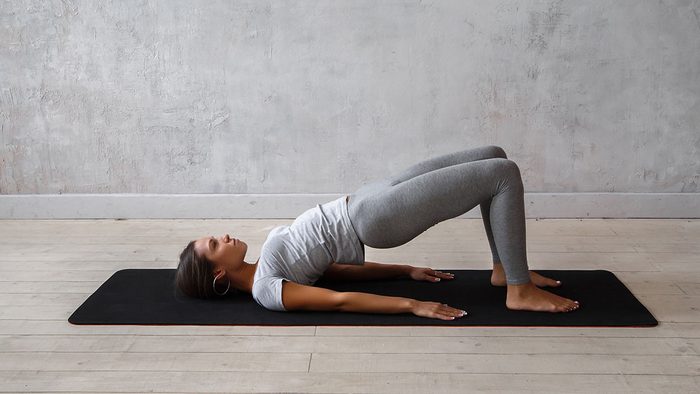
Bridge pose
This is a wonderful posture to open up the body and stretch the abdominal area. It also revitalizes the legs and stretches the shoulders. On your back with your knees bent, feet flat on the floor and about hip-width apart, lift the pelvis and hips upward. Keep the shoulders grounded, neck relaxed, and your head resting on the mat. Think about lifting your pelvis as high as possible, while breathing deeply and slowly. Hold this posture for four to six breaths to stimulate the abdominal organs and thyroid glands, which helps regulate your metabolism.
